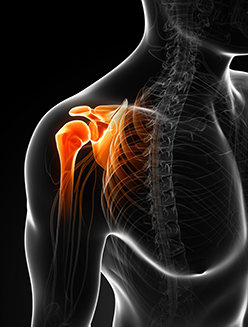Advanced Surgical Techniques: Shoulder Replacement
If nonsurgical treatments are no longer helpful for relieving pain in your shoulder, you may want to consider total shoulder replacement surgery.

Shoulder replacement surgery is a safe and effective procedure to relieve joint pain and restore shoulder function. In shoulder replacement surgery, the damaged parts of the shoulder are removed and replaced with artificial components, called prostheses.
Osteoarthritis (degenerative joint disease) is the "wear and tear" type of arthritis and is the most common reason for having a total shoulder replacement. Rheumatoid arthritis, post-traumatic injuries that cause tears in the cartilage surrounding the shoulder joint and rotator cuff, and avascular necrosis also lead patients to consider shoulder replacement.
San Antonio Regional Hospital’s Joint Replacement Center offers the latest surgical techniques to benefit those who suffer from chronic joint pain. Our surgeons are skilled in tissue sparing surgical techniques which protect muscle and ligament tissue as well as traditional procedures.
Total Shoulder Replacement
In shoulder replacement surgery, the damaged parts of the shoulder are removed and replaced with artificial components. The treatment options are either replacement of just the head of the humerus bone (ball), or replacement of both the ball and the socket (glenoid).
Reverse Shoulder Replacement
The conventional type of total shoulder surgery is not as beneficial for those who have large rotator cuff tears called "cuff tear arthropathy." With reverse shoulder replacement, the surgeon reverses the position of the ball and socket in the shoulder joint. A reverse total shoulder replacement works better for people with cuff tear arthropathy because it relies on different muscles to move the arm.
